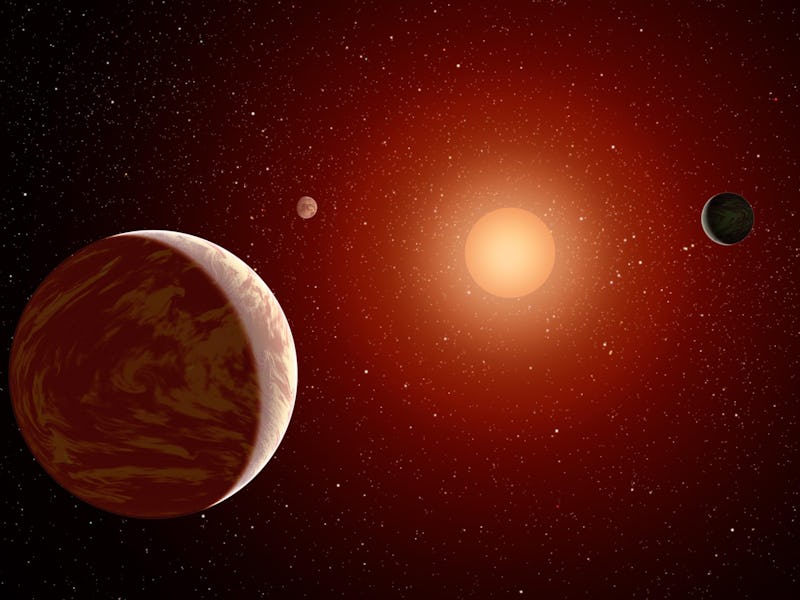Nearby Exo-Earth Family Withstands Extreme Scrutiny

The widely publicized discovery of a trio of Earth-like planets earlier this year just passed a crucial fact-check. In research published September 13 in The Astrophysical Journal Letters, astronomers determined that the TRAPPIST-1 star exists alone, with no companion star — meaning that the visual interruptions in its light output are almost certainly accounted for by the family of exoplanets instead of a previously undocumented second star.
The team of scientists behind the research used Chile’s eight-meter Gemini South telescope, along with a special high-resolution camera, to determine that TRAPPIST-1 does indeed stand alone. Dr. Steve Howell, a Scientist at Large at NASA Ames Research Center and lead researcher on the paper, said the observation itself took just 30 minutes.
“That’s one of the real powers of this technique, it doesn’t take long,” Howell told Inverse. “We point the telescope at a star [and do something] called Electron Multiplying CCD — like what people have on their cell phone cameras are also CCDs, just crappier than what we use. With this extra-special multiplication part we take thousands and thousand of very short exposures.”
The instrument itself is called the Differential Speckle Survey Instrument (DSSI). At 60 milliseconds apiece, each frame it produces doesn’t look much like a star on its own — more like a speckled spider web. (“That’s why it’s called that,” Howell said. “It looks like a bunch of speckles.”) Some 100,000 images are then stitched together mathematically using the Fourier system. The effect of the super-short exposures is to essentially freeze the atmosphere in each image, making it perfectly static, which removes the blurring quality of the atmosphere. When subsequently recombined, the micro-images form a picture of what the region would appear as with no atmosphere — scientists get a resolution as clear as if the telescope were actually in space.
Official designation: speckles
The three potentially habitable worlds were first announced in May following their discovery in orbit around the ultra-cool dwarf star. TRAPPIST-1 was named for the TRAPPIST project itself, which is short for the TRansiting Planets and PlanetesImals Small Telescope. The announcement received extraordinary publicity because of how near to Earth the TRAPPIST-1 star and its planets sit — just 40 lightyears, far closer than other potentially habitable planets.
Still, it will take more research to determine how habitable these planets really are — and better technology for us to actually see them for ourselves.